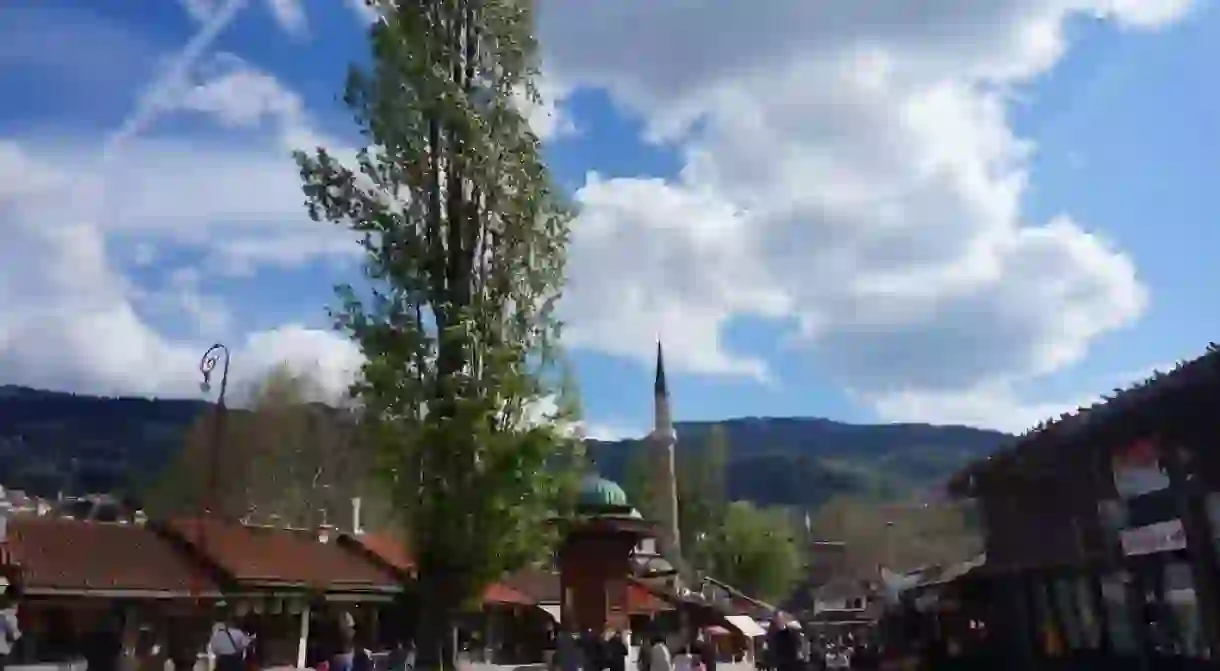The Coolest Neighbourhoods in Sarajevo, Bosnia

Sarajevo mixes Ottoman and modern skyscrapers, elegant Austro-Hungarian buildings with drab socialist blocks. Each of the city’s neighbourhoods have their own characteristics, attractions and stories to tell. Here are the most interesting to check out on your trip to Sarajevo.
Sarajevo’s neighbourhoods
Modern Sarajevo’s story dates back six centuries. The Ottomans created a central commercial zone, Bascarsija, in the same way as they did many other Bosnian old towns. Residential hamlets grew up in the surrounding hills with their own mosques and bakeries. The Austro-Hungarians, and later Yugoslavia, extended these, forming modern-day Sarajevo.
Walking west through the neighbourhoods is like travelling through time, from Ottoman Bascarsija to the more central Austro-Hungarian and socialist districts.

Bascarsija

In 1462, Isa-Beg Isakovic commissioned the Old Bazaar on the River Miljacka’s northern side. From this point, Bascarsija boomed. Gazi Husrev-beg built his mosque in 1530, as well as Hans and caravanserais for roaming traders.
The Golden Age came in the 17th-century, as the neighbourhood covered more than double its current size. Over 1000 shops with 80 different crafts filled the streets, until a fire destroyed most in the 19th century when Bosnia was part of Austria-Hungary. It wasn’t rebuilt.
Today, Bascarsija has souvenir shops, bars and restaurants filled with locals and tourists, instead of the artisans and traders of the past. You’ll find lots of hotels and hostels within easy walk of each other in the heart of Sarajevo.
Bistrik
Brewery, Bridge, Church, Monastery, Mosque, Museum
As a tourist, you may not appreciate the historical significance without a guide. The Sarajevo Brewery and the red and white Saint Anthony’s Church and Monastery are popular places to visit. The Brewery has a museum, fresh beer and played an essential role in survival during the Siege of Sarajevo (April 1992–February 1996).
Marijin Dvor
Yugoslavia extended Marijin Dvor and it became Sarajevo’s commercial and administrative centre. Endless Austro-Hungarian buildings line the streets, along with the Holiday Inn, modern skyscrapers and malls. The National Museum of Bosnia and Herzegovina and infamous Sniper’s Alley are here too.
Gorica
Building
Ciglane
Apartment
Hillside neighbourhoods
If you stand in Sarajevo and look around, you’ll see houses rising from the surrounding hills. Orange roofs contrast with blue sky and green hills, with a minaret popping up every now and again. These are Sarajevo’s oldest residential areas. People have long lived in small hillside neighbourhoods, only coming down to Bascarsija to trade. Most such neighbourhoods have a mosque, so residents didn’t have to go up and down five times each day for their prayers. Hike up the steep roads and stroll along old streets to glimpse Sarajevo’s history.














